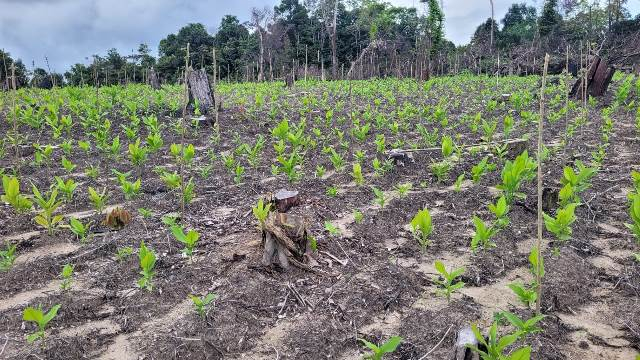Some 250 acres of farmlands in the sub-regions of Mabaruma and Matarkai, Region One, have been transformed into turmeric and ginger cultivation sites.
A donation of planting materials provided earlier this year by the National Agricultural Research and Extension Institute (NAREI) has facilitated the expansion of spice production in the region.
NAREI’s Research Scientist, Ramnarace Sukhna, and Extension Officer, Charles Romascindo recently visited various farms in the Mabaruma sub-region to assess the progress of the planting materials which exhibited an acceptable germination rate, indicating a promising future for the turmeric and ginger crops.
To maximise the yield of these crops, some farmers have chosen to intercrop their ginger with cassava, a practice known to provide benefits such as increased soil fertility and pest management.
Additionally, other farmers have opted to plant gliricidia alongside their turmeric and ginger crops.
The gliricidia will also serve as support structures for black pepper vines, which will provide valuable shade to enhance the growth and quality of the turmeric and ginger plants.
Following the successful cultivation of turmeric and ginger in the sub-regions, farmers are gearing up for the upcoming harvesting season in September and October.
Meanwhile, the trial production of mint, black pepper and cinnamon have recently begun in Aroaima Savannah, Region 10.
The introduction of these high value crops will continue to increase the livelihood of famers within these regions.
These initiatives are in keeping with government’s commitment to increase agricultural production of non-traditional crops and draws Guyana closer to realising the region’s goal to reduce its food import bill by 25 per cent by the year 2025.







